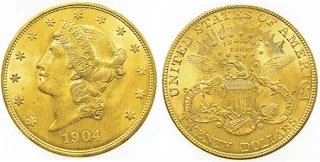11/15/2010 Portland, Oregon – Pop in your mints…
The world left off Friday with gold taking a $38 drop and the world markets worried that China is worried about inflation. At the Mint, however, we left off by coming to an even more astounding conclusion. One that has far reaching implications not only for misguided Keynesian school economists but for every dollar denominated bond and bank account holder. It also applies to those of us dinosaurs who still use dollars in its cash and coin form as much as possible.
The astounding conclusion is that the world, after nearly a century of increasing demand for dollars as a medium of exchange, is slowly turning towards other mediums of exchange to replace it. For those of you who missed it Friday, we put it this way:
We went on to bore the audience with a personal anecdote involving Surge cola so even the 10 of you who did read may have missed it. To those of you who did read and understand, please let the other 300+ million know because it is very important.
For roughly the past century, the United States grew into the largest economy on earth largely based on two factors. First, its inhabitants in most cases were free to invent, produce, and sell things that the world wanted to buy. Second, the US dollar, which it gave and received in trade, was backed by gold, which made the planning of production amongst various sectors occur tacitly in a coordinated and in a generally balanced fashion not only in the US but to an extent the entire world. This coordination of production is one of the many blessings of a stable currency. Another is that imbalances (planning errors made by entrepreneurs) tend not to get out of control because they run out of funds quickly. For the first 71 years of the past century, this combination of factors led to an increasing demand for US dollars.
 |
| It wasn't so long ago that US dollars were really made of gold! |
After World War II, the US was the only power and began to call the shots on the world stage. It became, by default, an empire. It also began to debase its currency (a process that began in 1913 when the FED was founded) as most empires have done. In 1971, the debasement became so severe that US dollars could no longer be redeemed for gold by foreign creditors. The world has lived the past 40 years by faith that the US dollar would continue to be accepted in trade. This faith has been aided by the fact that most crude oil and many other commodity contracts in the world originate and are traded in dollars. This perceived link is so strong that it has been speculated by conspiracy theorists that the invasion of Iraq may have been in part due to a plan by the regime there to write oil contracts denominated in other currencies.
Fast forward to 2010. Last week, both the President of the United States and its Secretary of the Treasury were in Seoul, South Korea to tell the G20 nations to stop printing their currencies so that the US can print more of its own in a desperate attempt at extending the life of the dollar system. The incoherence in their message was obvious to the other heads of state as they continue to openly mock the US approach to monetary policy. As the world's largest debtor, you would think that its leader's would arrive at the conference like beggars asking the understandable questions "Can anyone spare a buck?" or "Can we have our debts forgiven?" Instead, Obama and Geithner perplexed them by making an equally desperate yet bizarre plea of "Does anyone want a buck?"
On second thought, with at least $600 Billion extra on their hands, what else could they do?
Stay Fresh!
Key Indicators for Monday, November 15, 2010
Copper Price per Lb: $3.89
Oil Price per Barrel: $84.88
10 Yr US Treasury Bond: 2.60%
FED Target Rate : 0.17%
Gold Price per Oz: $1,369
Unemployment Rate: 9.6%
Inflation Rate (CPI): 0.1%
Dow Jones Industrial Average: 11,193
M1 Monetary Base: $1,763,300,000,000
M2 Monetary Base: $8,706,500,000,000
Copper Price per Lb: $3.89
Oil Price per Barrel: $84.88
10 Yr US Treasury Bond: 2.60%
FED Target Rate : 0.17%
Gold Price per Oz: $1,369
Unemployment Rate: 9.6%
Inflation Rate (CPI): 0.1%
Dow Jones Industrial Average: 11,193
M1 Monetary Base: $1,763,300,000,000
M2 Monetary Base: $8,706,500,000,000

No comments:
Post a Comment